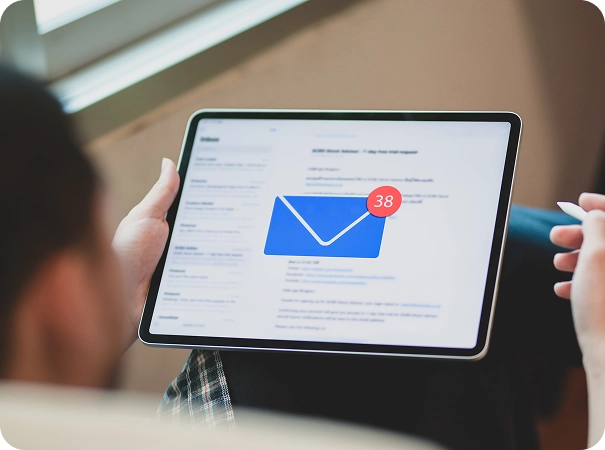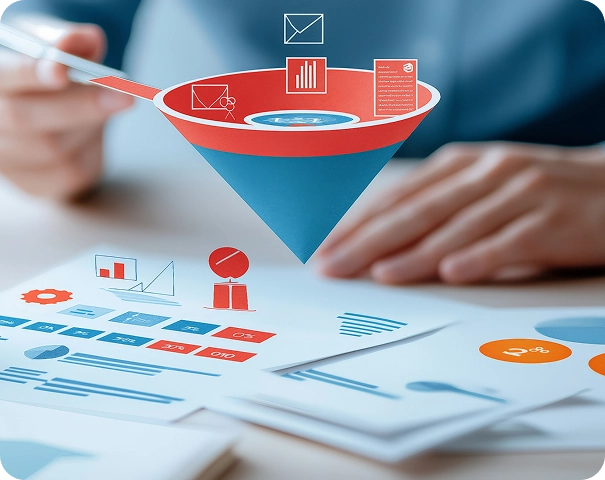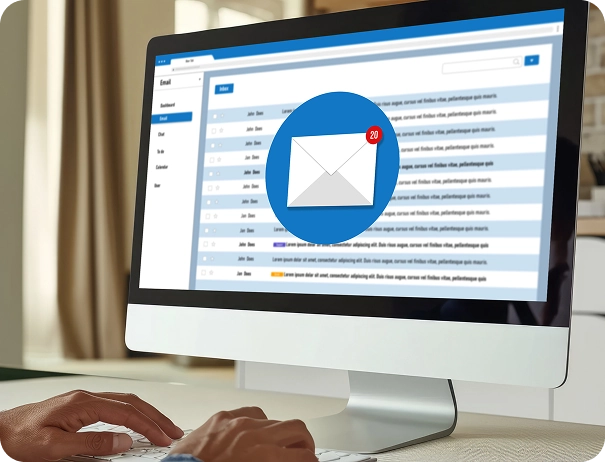E-mailing Basics:
What You Need to Know
As businesses increasingly move online, e-mail has become a vital tool for staying connected with customers and driving growth. Building a strong digital business today is almost impossible without a solid e-mail communication strategy. More than just a marketing channel, e-mailing plays a central role in helping brands manage their customer relationships and boost their visibility.
In this guide, we’ll look at why e-mailing matters and how well-designed sales funnels can turn visitors into loyal customers.

Definition of E-mailing
E-mailing is a digital communication method that can take several forms, including plain text, HTML, and image-based content. While text is the simplest format, HTML allows more dynamic and interactive designs with embedded links and visuals. Images can complement both formats when used effectively.
Primarily, e-mailing serves to inform customers, strengthen loyalty, and generate sales by directing users to specific pages of a website. It is not just about sending messages but creating meaningful engagement with potential and existing customers.

The Advantages of E-mailing
Cost-Effective Strategy:
One of the main advantages of e-mailing is its affordability. The costs of designing and producing an email campaign or just sending an e-mail is significantly lower compared to traditional marketing methods like postal mail.
Precise Targeting:
When a well-maintained database is built, businesses can target their audiences based on demographic and behavioral criteria, allowing for more personalized communication.
Ease and Speed of Use:
E-mail campaigns are easy to create and deploy quickly. Modern platforms support rich content, including animations and multimedia, helping to keep recipients engaged.
High Reactivity and Interactivity:
Campaigns often produce immediate responses, allowing customers to react quickly and access information with just a few clicks. High engagement rates reflect the relevance of the content and help solidify brand recall.
Tracking and Analytics:
One of the biggest advantages of e-mail marketing is the ability to track campaign metrics, such as open rates, click-through rates, and conversion rates. These insights are crucial for evaluating and improving future strategies.
In short, e-mailing provides an exceptional balance between cost, effectiveness, and precision, making it a powerful tool for fostering direct relationships and customer loyalty.
E-mailing and the Power of the Sales Funnel
A sales funnel is the structured journey that guides prospects from the initial awareness stage to becoming loyal customers. Think of it as a digital sales assistant working 24/7 to convert visitors into clients.
Stages of a Sales Funnel
Depending on the complexity of the product or service, sales funnels vary:
Regardless of complexity, having a reliable source of traffic feeding into the funnel is crucial for its success.
Simple Sales Funnel:
Leads visitors directly from a sales page to an order form and confirmation page.
Complex Sales Funnel:
Involves lead capture pages, automated e-mail sequences, sales pages, order forms, upselling opportunities, and subscription offers, culminating in a purchase confirmation.

Driving Traffic to Your Sales Funnel
Attracting qualified visitors is fundamental. Without traffic, even the best-designed sales funnel cannot perform. Common methods include:
- Publishing blog posts, webinars, podcasts, and video content.
- Maintaining active engagement on social platforms like Facebook, Instagram, and LinkedIn.
- Leveraging influence marketing collaborations to tap into influencer audiences.
- Investing in paid advertising, such as Google Ads and Facebook Ads.
Content marketing, social presence, partnerships, and paid media together build a steady flow of prospects into the funnel.
Creating an Effective Capture Page
Once traffic is generated, it is crucial to convert visitors into leads. This is done through a compelling capture page that offers value in exchange for contact details.
An effective lead capture strategy includes:
Identifying Customer Avatars:
Understanding the customer’s challenges, motivations, and goals.
Offering Value:
Incentives such as free resources, webinars, or discount codes tailored to customer needs.
Designing Attractive
Pop-ups or Landing Pages:
Engaging headlines, clear bullet points, a persuasive value proposition, and a simple form encourage visitors to submit their details.
Good capture pages set the foundation for nurturing long-term customer relationships through e-mail marketing.
Additional Actions to Boost the Sales Funnel
Other strategies can reinforce a sales funnel:
Sales Pages:
Dedicated pages showcasing product benefits and addressing objections.
Upselling and Cross-Selling:
Offering complementary products post-purchase to increase the average transaction value.
Customer Recovery Efforts:
Engaging dissatisfied or inactive customers through special offers or personalized communication.
Every interaction strengthens the brand relationship and improves conversion rates.
Conclusion
E-mailing continues to be a critical pillar of modern marketing strategies. Its cost-efficiency, adaptability, and measurable performance make it a key tool for driving growth and fostering customer loyalty.
When paired with a well-structured sales funnel, backed by strong SEO practices and multi-channel traffic generation strategies, e-mail marketing can become a cornerstone of any business’s digital success.
Understanding audience needs, optimizing message formats, and maintaining consistent engagement are vital steps for leveraging e-mailing’s full potential in today’s competitive online landscape.
